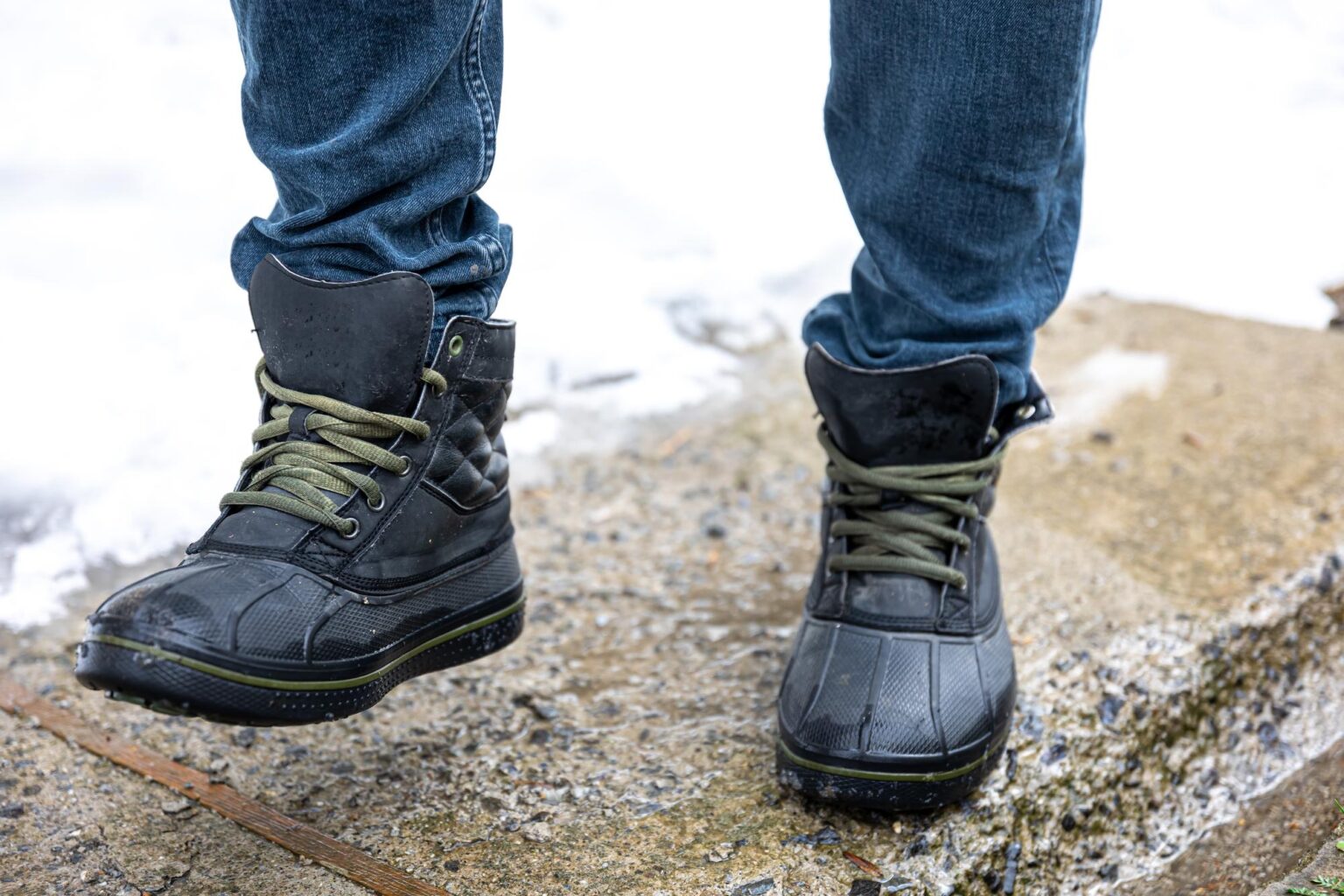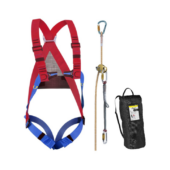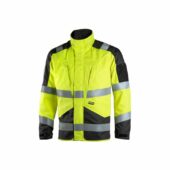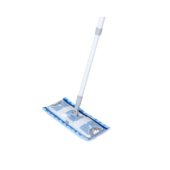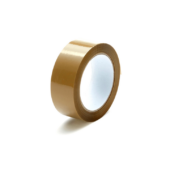Working in construction during winter presents unique challenges, from extreme cold to slippery surfaces. Finding the right winter safety shoes is key to staying safe and productive.
This comprehensive guide will not only help you choose the perfect pair of insulated work boots or cold weather safety boots for construction but also ensure you’re prepared for the next steps, like maintaining your footwear and complementing it with other essential winter workwear.
For an overarching perspective, see “How To Choose The Right Winter Safety Shoes – A Buyer’s Guide”.
Key Features to Look for in Winter Safety Shoes for Construction
To choose the best cold weather safety boots for construction, evaluate them based on the following essential features:
1. Thermal Insulation
A well-insulated shoe maintains warmth, protecting your feet in subzero temperatures. Look for materials like Thinsulate or fleece linings that trap heat while allowing breathability.
- Best practices: Ensure insulation is rated for the temperatures you’ll encounter. Many shoes are marked with temperature ratings.
- Example: Construction workers in Scandinavia may need shoes rated for -20°C or lower.
2. Slip-Resistant Soles
Construction sites in winter can be wet or icy, but slip-resistant soles provide enhanced stability for safe and confident movement.
- Look for: Soles with deep treads made from durable rubber compounds.
- Certifications: Standards such as SRC (EN ISO 20345) indicate reliable slip resistance.
3. Waterproofing
Snow and slush are no match for waterproof materials, which ensure your feet remain warm and dry throughout your workday. Waterproof materials or coatings keep your feet dry and warm.
- Popular materials: GORE-TEX and other water-resistant membranes.
- Tip: Double-check that seams are sealed to prevent leaks.
4. Toe Protection
Construction safety shoes should meet European safety standards (EN ISO 20345), ensuring reliable protection and durability for challenging construction environments. Shoes certified under EN ISO 20345 also include slip resistance, energy absorption in the heel area, and resistance to water penetration, making them suitable for harsh winter conditions.
- Options: Composite or steel-toe caps.
- Composite benefits: Lightweight and non-conductive, ideal for freezing conditions.
5. Comfort and Fit
Spending long hours on your feet requires shoes that are comfortable and supportive. A proper fit ensures all-day comfort, prevents foot strain, and helps you stay productive.
- Tip: Try shoes with adjustable laces or straps for a snug fit.
- Sizing guide: Use the chart below to determine the correct size.
| EU Size | UK Size | Foot Length (cm) |
| 40 | 6 | 25.0 |
| 42 | 8 | 26.5 |
| 44 | 10 | 28.0 |
These sizing are general ideas, to learn more about sizing consult with the supplier directly.
How to Match Winter Safety Shoes to Construction Tasks
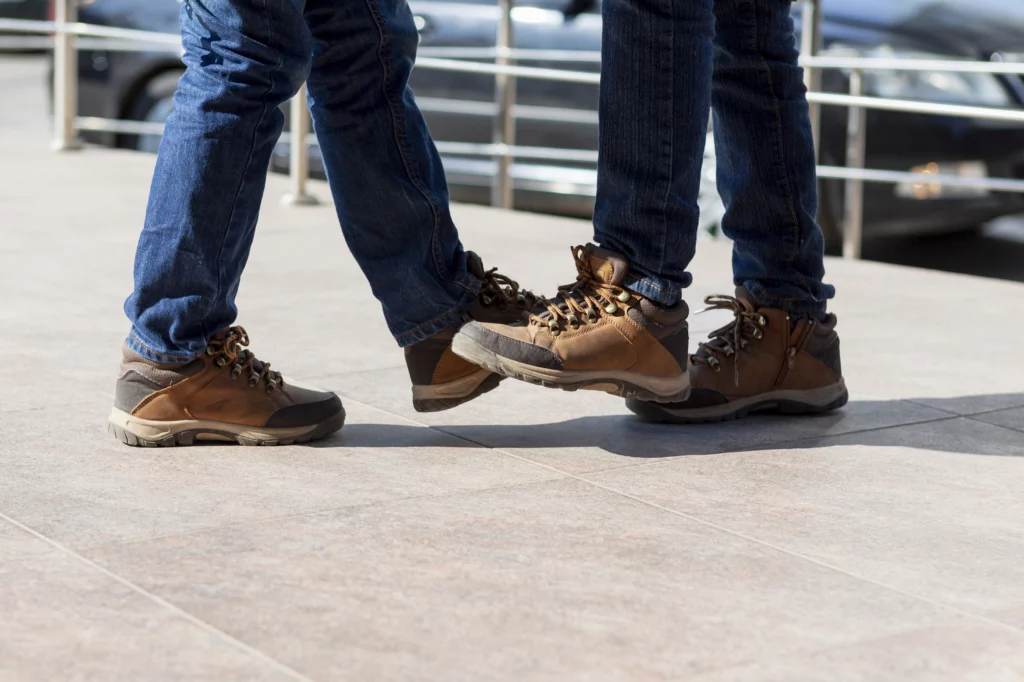
Different construction environments call for specific types of winter safety shoes. Here’s how to choose based on your work conditions:
Indoor vs. Outdoor Work
- Indoor sites: Prioritize lightweight and breathable insulated shoes to prevent overheating.
- Outdoor sites: Choose shoes with heavy insulation and a waterproof outer layer.
Terrain-Specific Features
- Uneven terrain: Deep tread patterns and ankle support are crucial.
- Flat surfaces: Focus on lightweight and flexible soles for ease of movement.
High-Risk Zones
- Steel-toe boots: Essential for areas with heavy machinery or risk of falling objects.
- Electrical safety boots: Use non-conductive materials in environments with electrical challenges.
Comparison Chart: Winter Safety Shoes
To simplify your decision, here’s a quick comparison of different types of winter safety shoes and their features:
| Feature | Steel Toe Boots | Composite Toe Boots | Lightweight Insulated Boots |
| Weight | Heavy | Medium | Light |
| Insulation | High | High | Medium |
| Slip Resistance | Excellent | Excellent | Good |
| Waterproofing | High | High | Medium |
Use this chart to prioritize the features most important to your work environment.
Related Workwear for Winter Construction
Your winter safety shoes work best as part of a complete winter workwear setup. Consider these complementary products:
- Winter Work Gloves: Essential for maintaining grip and warmth. Learn more in “Choosing Work Gloves For Cold Weather”.
- Winter Work Jackets: Insulated jackets ensure core warmth. Read “How To Choose Work Jackets For Winter”.
- Winter Work Pants: Protects your legs from cold and moisture. Explore “How To Choose Work Pants For Winter”.
- Winter Overalls: Ideal for full-body protection in extreme cold. Discover more in “Work Overalls For Winter: The Ultimate Guide”.
Maintenance Tips for Winter Safety Shoes
Keep your winter safety shoes in top condition with these easy care tips:
- Clean regularly: Remove mud, salt, and debris to prevent material degradation.
- Dry thoroughly: Always air-dry shoes after exposure to moisture to maintain insulation.
- Inspect frequently: Regularly inspect your shoes to ensure their soles, waterproofing, and toe caps are in optimal condition for reliable performance.
- Reapply waterproofing: Use sprays or waxes periodically to ensure water resistance.
Where to Buy Winter Safety Shoes for Construction
You can find a wide range of high-quality winter safety shoes at Droppe’s Winter Safety Shoes Category. Explore options designed to meet European standards and provide dependable performance across diverse construction conditions.
Conclusion
Choosing the right winter safety shoes for construction is crucial for ensuring safety, comfort, and productivity during harsh winter conditions. By focusing on features such as insulation, slip resistance, waterproofing, and proper fit, you can confidently tackle any challenges the season throws your way. Pair your shoes with other essential winter workwear like gloves, jackets, and pants for a comprehensive safety solution.
Explore our extensive guides like “How To Choose The Right Winter Safety Shoes – A Buyer’s Guide” for further details. Have questions about optimizing your winter gear? Stay tuned—our next guide will cover troubleshooting worn-out soles, choosing the right insoles for enhanced comfort, and additional tips to keep your safety footwear performing like new.
Frequently Asked Questions
Use a sizing chart and try boots with the socks you’ll wear on the job. Boots should be snug but not tight.
Winter boots are ideal for cold and wet conditions but may not be suitable for hot weather. Use boots designed for warmth in winter and breathable ones in summer.
With proper care, winter safety boots last 1-3 years, but harsh conditions may reduce their lifespan.
Some winter boots are non-conductive. Look for composite toe caps and non-metallic materials for electrical safety.
Yes, cushioned insoles can improve comfort, but ensure they don’t interfere with the boots’ safety features.

